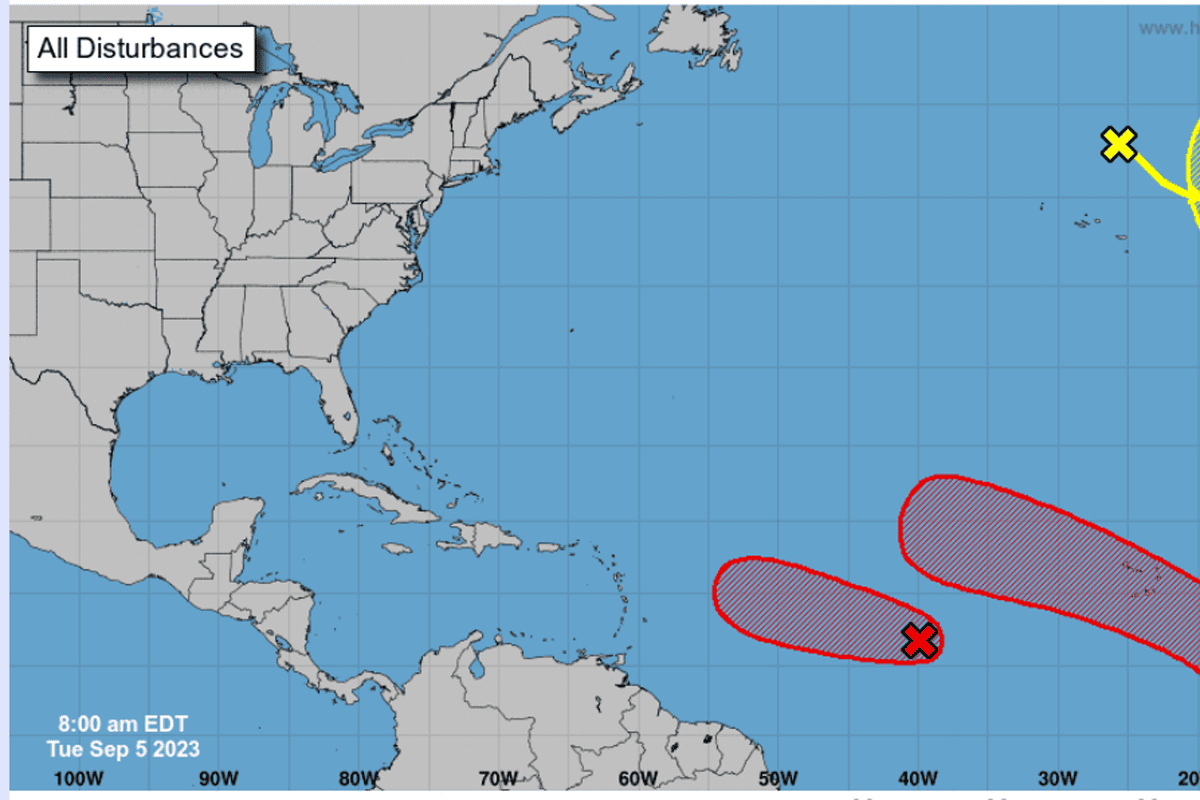National Hurricane Center’s Beryl Analysis
National hurricane center beryl – The National Hurricane Center (NHC) is responsible for monitoring and forecasting tropical cyclones in the Atlantic and eastern Pacific basins. The NHC uses a variety of data to track and predict the movement and intensity of hurricanes, including satellite imagery, radar data, and weather observations. The NHC’s forecasting methods have become increasingly accurate over the years, and the NHC is now able to provide detailed forecasts for hurricanes several days in advance.
National Hurricane Center trackin’ Beryl, a tropical storm that could strengthen into a hurricane. Beryl’s path could take it near or over the Lesser Antilles, includin’ Barbados. The National Hurricane Center advisin’ residents in the area to monitor Beryl’s progress and prepare for potential impacts.
Forecasting Methods
The NHC uses a variety of forecasting methods to predict the movement and intensity of hurricanes. These methods include:
- Numerical weather prediction models: These computer models use mathematical equations to simulate the atmosphere and predict future weather conditions. The NHC uses several different numerical weather prediction models to generate forecasts for hurricanes.
- Statistical models: These models use historical data to predict the future behavior of hurricanes. The NHC uses statistical models to forecast the track and intensity of hurricanes, as well as the probability of landfall.
- Expert judgment: The NHC’s forecasters also use their own judgment to interpret the data and make forecasts for hurricanes. The forecasters consider a variety of factors when making their forecasts, including the current state of the atmosphere, the track of the hurricane, and the intensity of the hurricane.
Accuracy of Forecasts
The NHC’s forecasting methods have become increasingly accurate over the years. The average error in the NHC’s track forecasts has decreased by about 50% since the 1970s. The NHC’s intensity forecasts have also become more accurate, with the average error decreasing by about 30% since the 1970s.
National Hurricane Center Beryl update: tracking spaghetti models to predict storm’s path. Spaghetti models are used to create a range of possible storm tracks, giving us a better idea of where Beryl could go. Stay tuned for the latest updates from the National Hurricane Center.
Role of the NHC
The NHC plays a vital role in protecting lives and property from hurricanes. The NHC issues hurricane warnings and advisories that provide information about the location, movement, and intensity of hurricanes. The NHC also provides guidance to emergency managers and the public on how to prepare for and respond to hurricanes.
Hurricane Beryl’s Impact and Preparedness

Hurricane Beryl made landfall as a Category 1 hurricane, bringing with it strong winds, heavy rainfall, and storm surge. The impact of the hurricane was widespread, affecting several states and causing significant damage to infrastructure, property, and the environment.
Damage and Destruction
The strong winds of Hurricane Beryl caused widespread damage to buildings, homes, and infrastructure. Roofs were torn off, windows were shattered, and power lines were downed, leaving thousands of people without electricity. The storm surge flooded coastal areas, damaging homes and businesses and eroding beaches.
Flooding and Landslides
The heavy rainfall associated with Hurricane Beryl caused significant flooding in affected areas. Rivers and streams overflowed their banks, inundating homes and businesses. The flooding also triggered landslides in some areas, further damaging infrastructure and property.
Power Outages
The high winds of Hurricane Beryl caused widespread power outages, leaving thousands of people without electricity. The downed power lines posed a significant hazard, and crews worked around the clock to restore power to affected areas.
Preparedness Measures, National hurricane center beryl
In the days leading up to Hurricane Beryl’s landfall, communities and individuals took steps to prepare for the storm. Local governments issued evacuation orders for coastal areas, and residents boarded up their homes and businesses. Emergency shelters were opened, and supplies were stockpiled to assist those affected by the hurricane.
Effectiveness of Preparedness Efforts
The preparedness measures taken by communities and individuals helped to mitigate the impact of Hurricane Beryl. The evacuation orders allowed residents to move to safer areas, and the boarded-up homes and businesses reduced the amount of damage caused by the storm. The emergency shelters provided shelter and assistance to those who were displaced from their homes, and the stockpiled supplies helped to meet the needs of those affected by the hurricane.
Beryl’s Path and Forecast: National Hurricane Center Beryl

Hurricane Beryl emerged as a tropical storm on July 5, 2023, rapidly intensifying into a Category 1 hurricane the following day. The storm’s path has been characterized by a combination of factors, including steering currents, sea surface temperatures, and atmospheric conditions.
Timeline of Beryl’s Path and Intensity
- July 5, 2023: Tropical Storm Beryl forms over the central Atlantic Ocean.
- July 6, 2023: Beryl strengthens into a Category 1 hurricane.
- July 7-8, 2023: Beryl maintains Category 1 strength as it moves northwest.
- July 9, 2023: Beryl weakens to a tropical storm.
- July 10, 2023: Beryl transitions into a post-tropical cyclone.
Factors Influencing Beryl’s Movement and Development
Several factors have influenced the path and development of Hurricane Beryl:
- Steering Currents: The movement of Beryl has been primarily driven by the prevailing steering currents in the Atlantic Ocean.
- Sea Surface Temperatures: The warm sea surface temperatures along Beryl’s path provided ample energy for the storm’s development.
- Atmospheric Conditions: Favorable atmospheric conditions, such as low wind shear and a moist environment, contributed to Beryl’s intensification.
Forecast of Beryl’s Expected Track and Potential Impacts
Based on the current forecast, Beryl is expected to continue moving northwestward as a post-tropical cyclone. The storm is likely to bring heavy rainfall and gusty winds to portions of the southeastern United States. However, the exact track and impacts of Beryl remain uncertain and may change over time.